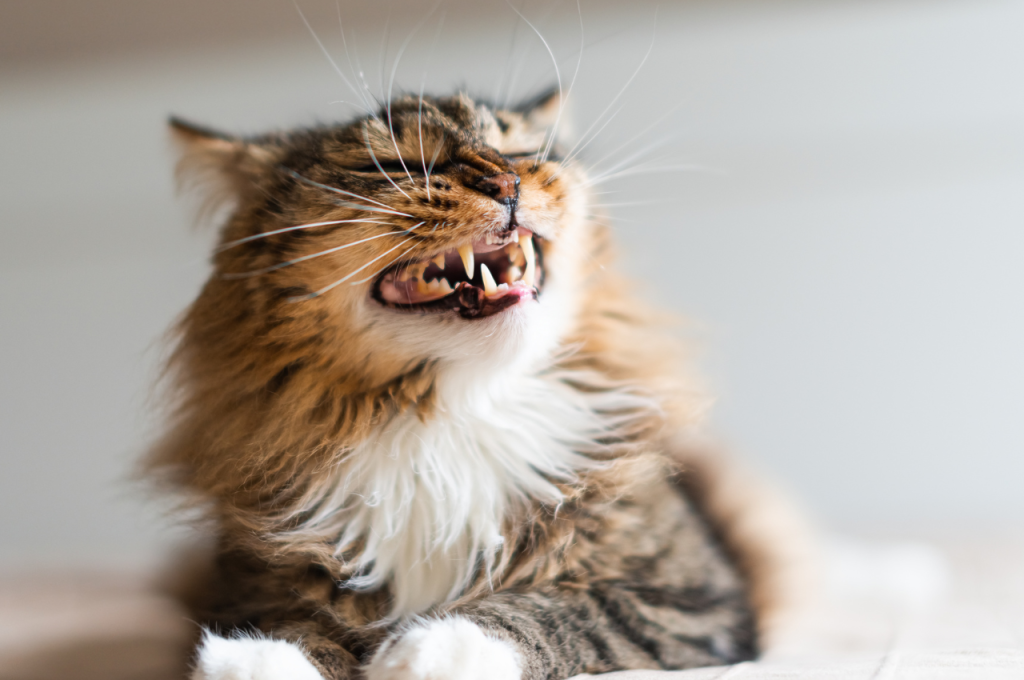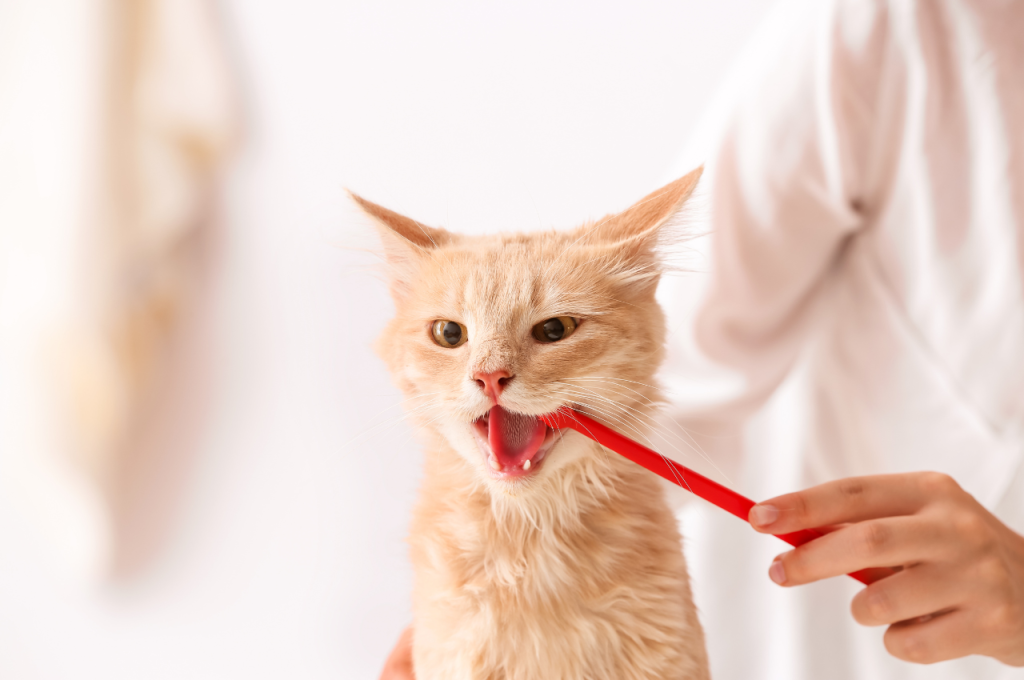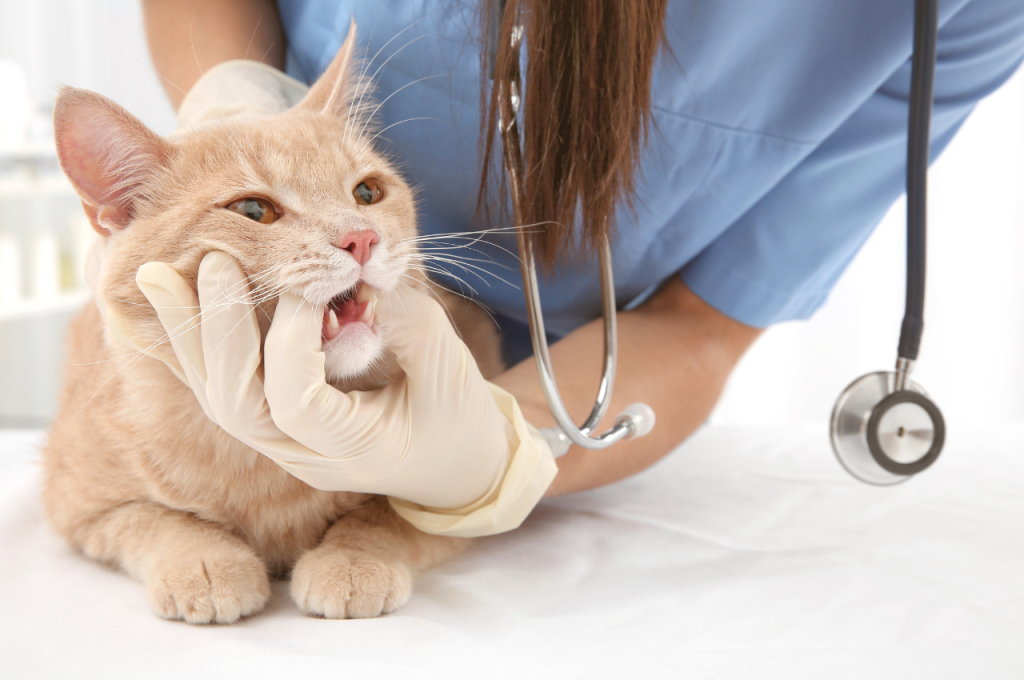A cat has 30 teeth, consisting of 12 incisors, 4 canines, and 14 molars. Cats are fascinating creatures and make great pets.
Most people know that cats have sharp claws and are great hunters, but what about their teeth? Have you ever wondered how many teeth a cat has? Well, cats have 30 teeth in total, consisting of 12 incisors, 4 canines, and 14 molars.
Their teeth are designed for biting, tearing, and chewing their food. We will discuss the different types of teeth that cats have, their function, and how to take care of them. By the end of this article, you will be an expert on cat teeth and be able to ensure your furry little friend’s dental health.
Why Your Cat’s Teeth Are Important
Cats have 30 teeth and just like humans, their teeth play a crucial role in their overall health. Even though many cat owners tend to ignore their cats’ oral health, it is essential to keep their teeth healthy to prevent further health concerns. In this section, we will explore the anatomy of a cat’s teeth and the role they play in maintaining their overall health.

Anatomy of A Cat’s Teeth
A cat’s teeth are categorized into four types: incisors, canines, premolars, and molars. The incisors are located at the front of their mouth and are used primarily for grooming and nibbling. The canines are the large fangs located at the corners of their mouths and are used for grasping and tearing meat. The premolars and molars are located further back in the mouth and are primarily used for chewing and grinding food.
The structure of a cat’s teeth is also different from that of humans. Cats have a thin layer of enamel on their teeth, which makes them more susceptible to dental issues such as tooth decay and gum disease.
The Role of its Teeth in Maintaining Overall Health
Your cat’s teeth play a crucial role in maintaining their overall health. Poor oral health can lead to a variety of issues such as bad breath, tooth decay, and gum disease. If left untreated, gum disease can cause infections that can spread to other parts of the body, such as the heart and kidneys.
By taking care of your cat’s teeth, you can prevent serious health concerns and ensure they live a long and healthy life. Some ways to maintain your cat’s oral health include regular brushing, providing dental treats, and scheduling regular dental check-ups with your veterinarian.
How Many Teeth Do Cats Have
Cats have two sets of teeth- 26 deciduous or baby teeth, which they lose by six months, and 30 permanent teeth. The sharp, pointed teeth in front are used for grabbing and biting while the molars towards the back of the mouth are for chewing.
Types and Number of Teeth
Cats are known for their sharp teeth, which are one of their unique features. Adult cats have 30 permanent teeth, while kittens have 26 baby teeth that fall out eventually. Their teeth are classified into four different types:
- Incisors: These front teeth are used for grooming purposes, as well as for biting into food.
- Canines: Also known as fangs, these sharp teeth are used for tearing and shredding food.
- Premolars: These teeth are located between the canines and molars, and are used for grinding and chewing food.
- Molars: The largest and strongest teeth at the back of the mouth, used for chewing and grinding food into smaller pieces.
The Differences Between Kitten Teeth and Adult Teeth
Kittens are born without teeth, and their first set of teeth, also called deciduous teeth or milk teeth, begin to emerge at around 2-3 weeks of age. By the time they are 6-7 weeks old, they will have a full set of 26 baby teeth. These small teeth fall out to make way for permanent teeth when the kitten is around 3-4 months old. The process of losing and growing teeth can make kittens extra irritable, so it’s essential to provide them with suitable chew toys to help alleviate the pain and discomfort. Adult cats’ teeth are much larger and stronger than kittens, with a total count of 30 teeth. Cats’ teeth are designed to crush and tear meat, as they are obligate carnivores. They require strong, sharp teeth to eat, and their teeth are much more resistant to decay than humans, as they naturally secrete less saliva, which slows the buildup of harmful bacteria.
Signs of Dental Problems in Cats
Cats have 30 adult teeth, and any deviation from this number indicates dental problems. Some signs of dental problems in cats include bad breath, difficulty chewing, excessive drooling, and swollen or bleeding gums. Keeping an eye on your cat’s dental health can help prevent major oral issues.
Cats are known for their pristine grooming habits. However, when it comes to their oral hygiene, they rely on their owners to keep their teeth clean and healthy. Dental problems are common in cats and can lead to a variety of health issues if left untreated. Therefore, it is important to recognize the signs of dental problems in cats to ensure prompt treatment.
Bad Breath
One of the most common signs of dental problems in cats is bad breath. While it is normal for a cat to have some odor in their mouth, persistent bad breath can indicate a dental issue. The foul odor is caused by the buildup of bacteria and plaque in their teeth and gums. If you notice that your cat’s breath smells particularly bad, it is time to schedule a dental checkup with your veterinarian.
Difficulty Eating or Swallowing
Another sign of dental problems in cats is difficulty eating or swallowing. If your cat starts to avoid their favorite foods or has trouble chewing, it could be due to a dental issue. Cats may also drool excessively or paw at their mouth when experiencing dental pain.
In severe cases, they may even refuse to eat altogether. If you notice any of these signs, it is important to take your cat to the veterinarian to determine the cause of their discomfort.
Loose or Missing Teeth
Loose or missing teeth are a clear indication that your cat has a dental problem. Dental diseases such as periodontal disease, which is caused by bacteria and plaque buildup, can cause teeth to become loose or fall out. If you notice that your cat has lost one or more teeth, it is important to schedule a dental checkup with your veterinarian to determine the underlying cause and proper treatment.
How to Keep Your Cat’s Teeth Healthy
Cats have 30 teeth that should be taken care of to avoid dental problems. Regular veterinary checkups, tooth brushing, and providing dental treats can help maintain your cat’s oral health.

Cats are adorable creatures that need proper care, and one aspect that is often overlooked is their dental health. Just like humans, cats can suffer from dental problems like bad breath, tartar buildup, gingivitis, and tooth decay. This section will explore various ways to keep your cat’s teeth healthy and prevent dental problems.
Regular Brushing and Flossing
Regular brushing and flossing are crucial in maintaining good dental hygiene in cats. Evidence shows that brushing your cat’s teeth daily can reduce the risk of periodontal disease significantly. You can use a small toothbrush and toothpaste specially made for cats to brush their teeth gently. Flossing involves removing food particles and plaque between the teeth of cats using dental floss. Nonetheless, you may need to get your cat accustomed to brushing and flossing gradually.
Dietary Recommendations
The food your cat eats plays a crucial role in keeping its teeth healthy. A diet consisting of hard kibble is better for cats than soft food, as it helps to remove plaque and tartar buildup from their teeth. Wet food contains high sugar and starch, which increases the risk of tooth decay and gum disease. Additionally, specific treats are available that aid in removing plaque and bacteria from your cat’s teeth.
Professional Dental Care
If you plan to keep a healthy tooth in your cat’s mouth, regular dental check-ups and professional cleanings are recommended. Check-ups can identify dental problems early on, while regular cleanings can prevent the build-up of tartar and plaque, which leads to tooth decay. Regular dental check-ups and professional cleaning also ensure that your cat receives the appropriate dental treatment promptly. The anesthesia-free short sessions are usually recommended to ensure that an animal’s oral hygiene is up to the mark.
Cat Dental Myths Debunked
Cat owners often have different beliefs about taking care of their feline friend’s dental hygiene. However, not all of these beliefs are true. In this article, we will debunk some of the common cat dental myths.
Cats Don’t Need Dental Care
One of the most common cat dental myths is that cats don’t need dental care. This is not true. Cats require regular dental check-ups and cleanings just like humans do. Neglecting your cat’s dental hygiene can result in severe dental problems in the future. Dental issues can lead to discomfort, and pain, and even affect your cat’s ability to eat.
Dry Food is Sufficient for Preventing Dental Issues
Another common myth is that dry food is enough to prevent dental issues. This is false. While dry food can help to scrape tartar off your cat’s teeth, it is not enough to prevent dental issues entirely. Wet food also plays a pivotal role in preventing dental issues. Feeding your cat a balanced diet consisting of both wet and dry food can help maintain your cat’s dental hygiene.
Cats Can’t have Cavities
Cats can most definitely have cavities, just like humans. Cavities in cats are usually caused by a diet high in sugary treats and a lack of dental hygiene. Cats are also prone to developing gum disease, which can further exacerbate dental problems. Therefore, it is important to maintain your cat’s dental hygiene and feed them a balanced diet.
Common Cat Dental Procedures
Cats have a total of 30 teeth, including incisors, canines, premolars, and molars. Common dental procedures for cats include cleanings, extractions, and treating periodontal disease to maintain their dental health.
Cats are susceptible to various dental conditions that can seriously affect their quality of life, including tooth decay, gum disease, and infections. Common dental procedures for cats are teeth cleaning, tooth extractions, and root canals.
Teeth Cleaning
Professional teeth cleaning is necessary to remove plaque and tartar buildup in your cat’s mouth. Your veterinarian will perform scaling and polishing of teeth while the cat is under anesthesia. They may also perform dental X-rays to check for any underlying issues. Regular teeth cleaning will help prevent gum diseases and keep your cat’s teeth clean and healthy.
Tooth Extractions
Extraction of teeth is a common dental procedure for cats that have a damaged, infected, or broken tooth. Your veterinarian will perform the procedure under anesthesia to minimize discomfort to the cat. They may prescribe antibiotics and painkillers for post-operative care. In some cases, the extraction of a single tooth may require dental x-rays

Root Canals
Root canal treatment is a complex dental procedure performed when the dental pulp inside a cat’s tooth becomes infected, leading to severe pain and discomfort. During the procedure, the infected pulp is removed and replaced with filling material. This procedure is usually performed by a specialist veterinary dentist.
Conclusion
Overall, understanding how many teeth a cat has is important for their dental health. Cats have 30 teeth in total, including incisors, canines, premolars, and molars. It’s essential to keep their teeth clean to prevent dental diseases and ensure their well-being.
Regular checkups with a professional veterinarian and providing them with dental health treats can help maintain optimal oral hygiene. By keeping your feline friend’s mouth healthy, you can ensure they lead a happy and healthy life.
